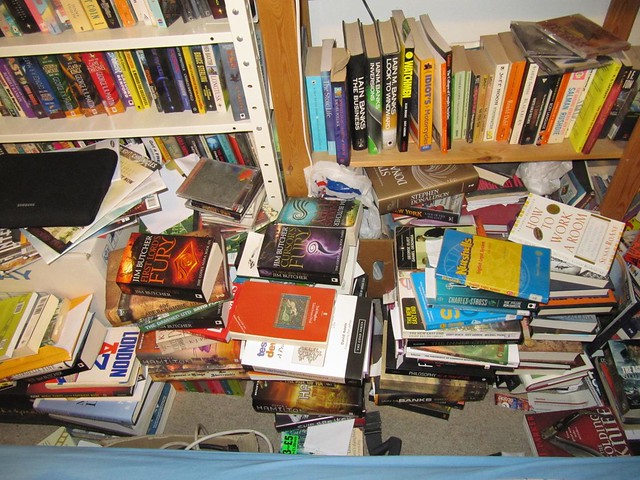
We are not cisterns made for hoarding,
we are channels made for sharing.
Shopping Bags
One of my girlfriends is a neat-freak, and that’s okay for her. I am one of her many friends who is not. For us, she has a phrase, “You know that you’re just two shopping bags of being a hoarder.” I am reasonably sure that is not true. I have seen the TV show, “The Hoarders” once or twice. And, even though my house may not smell of Clorox and Pine-sol, it doesn’t look anything like those.
This show has focused new attention on the issue of hoarding. Most of us have much more than we need. Maybe you really are being buried alive by your stuff, or maybe you just need to empty out that hall closet. But a hoarder, certainly not…
But, there is always something useful that we can learn from every situation. So, let’s back it down a notch and look at what we now know about hoarding along with a few techniques to manage mild tendencies, and when to seek intervention for you or your loved one.
Basic Facts about Hoarding
1. First, we need to recognize that hoarding is a mental health issue. The major symptoms include a strong urge to acquire items and trouble with discarding them that interferes with daily life. Those who struggle with this dilemma may suffer from depression or attention deficit disorders, but often they have no known history of mental illness.
2. We need to try to identify the underlying causes. It may be that you are just indecisive and try to avoid making mistakes by holding onto everything just in case. It may also be that we have a propensity to procrastinating and have difficulty getting organized.
3. Knowing the risk factors. Anyone can become a hoarder but older women who are socially isolated are at higher risk. Keep this in mind if you have been thinking that you need to change your own life circumstances or if you’re caring for an aging parent or other relative.
4. Put yourself to the test. Compulsive hoarders may need professional intervention but there are also tests that can help you make an initial assessment. Go to Hoarding Rating Scale Interview. It has 5 simple questions with replies ranging from “no problem” to “extreme.”
Techniques for Coping with Our Mild Hoarding Tendencies
1. Organize your valuables. Organization is a key distinction between being a collector and being a hoarder. Create an attractive display for your prized books or antique dolls so you can feel good about them and enjoy sharing them with others.
2. Budget your Purchases. Buy only what you can afford to pay cash for. Look for bargains or save up in advance for major new purchases.
3. De-acquisition as needed. That sounds like such a lovely phrase, doesn’t it? Give the stuff away!!! Every librarian or museum director appreciates the value of de-selection guidelines. Make your best stuff appear more attractive and accessible by getting rid of items in poor condition, objects of lesser quality, or something you don’t plan to use, display or pass on to your children.
Intervention May Be Required (Severe Hoarding)
1. Be honest with yourself. If your situation is a health or safety risk, get help. Animal hoarding, fire hazards or nonworking utilities can pose urgent dangers.
2. Clutters Anonymous is a self help group with a 12 step program like Alcoholics Anonymous.
3. Enlist support. Reach out to a friend. Call up people who really care about you and can help you get rid of some of your stuff. Ask friends and family to pitch in with removal tasks and providing more opportunities for socializing.
If you are a caregiver trying to help someone else, caregivers and their loved ones benefit from building alliances. Ask your local council on aging about relevant programs within your community. Look into professional services like house cleaning agencies and storage centers.
4. Find local therapists and resources as needed. This can be presented as an option, as it is a highly personal and individual decision.
5. If you are providing this service for someone else, always remember to be compassionate and sensitive. Be respectful and nonjudgmental to avoid exacerbating any feelings of shame. Offer sincere praise as progress is made. It’s usually easiest to start out by focusing on tasks like sorting rather than throwing things away. Ask for permission before touching anything.
Those TV shows, even though we think they are either funny or appalling, have probably helped many people by shining a light on the issue of compulsive hoarders. Many more have probably gone out to get the assistance they need.
But remember, the solution usually reaches much deeper than just tidying up the house a bit.
Recognize the warning signs for hoarding in yourself, as well as those you care for and about, so that you and the people you care about can restore order in your emotional lives and in your homes.
Thoughts or additional suggestions?
Additional Resources:
Hoarding Rating Scale Interview
photo credit: http://www.flickr.com/photos/theophileescargot/5950985345/sizes/z/in/photostream/






